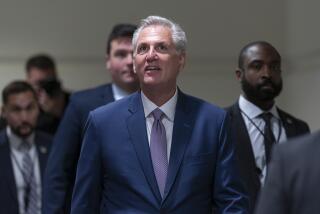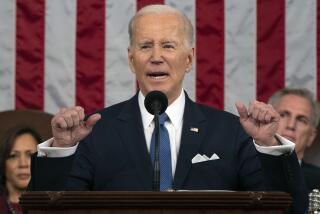Going public
Democratic leaders of the House unveiled a sweeping, 1,990-page healthcare reform bill last week that they plan to take to the floor early this month. Their counterparts in the Senate are nearing the same point, although they’re still working to line up enough support from moderates to overcome a likely Republican filibuster. The progress on the bills is encouraging, and we find much to like in both. But we’re also troubled by some of the choices top Democrats are making and by the costs that some lawmakers are trying to obscure.
The main hang-up in the Senate is the decision by Majority Leader Harry Reid (D-Nev.) to include a “public option” -- a government-run insurance plan that uninsured individuals and small businesses could choose instead of a private insurance plan. The idea has drawn fierce opposition from the health insurers’ lobby, as well as resistance from conservative and centrist lawmakers who don’t like to see the government compete with private industry. But Reid also disappointed liberals by backing a public plan that negotiates with doctors and hospitals over reimbursement rates rather than paying the same low, government-set rate as Medicare. House leaders made a similar concession in their bill. Some critics say the lower reimbursement rates are vital to the public plan’s ability to hold down premiums. The Congressional Budget Office, in fact, predicted that the public plan in the latest House bill would have to charge higher premiums than private insurers.
Still, it’s a good compromise. There are ugly side effects to paying below-market reimbursement rates. A growing number of providers are turning away Medicare patients because reimbursement levels are too low. And many of the doctors and hospitals that continue to accept Medicare offset the cost by charging higher rates to their other patients. The public plan can still serve an important function by leading efforts to change the way health services are sought, delivered and paid for.
Short of imposing a national cap on spending (and explicitly rationing care), the best hope for controlling costs in the long run is finding more efficient and effective ways to deliver and pay for healthcare, along with more powerful inducements for consumers to lead healthy lifestyles. Such changes go to the root of the problem in healthcare today -- skewed incentives that encourage an overconsumption of expensive services -- rather than just addressing the symptom of rising premiums. If the public plan is in the vanguard of the efforts to improve the quality and coordination of care, it will put the right kind of competitive pressure on private insurers.
The House bill would lead to more than $1 trillion in new federal spending over 10 years, paid for through tax hikes and cuts in Medicare and Medicaid. But the true cost of the effort will be even higher, and lawmakers will have to dig deeper to pay for it. Both the House and Senate bills assume a double-digit cut in Medicare reimbursement rates that’s slated to take effect next year. It’s a bogus assumption -- the cut is impossibly deep, and Congress will no doubt cancel it. The issue should have been dealt with in this legislation, so the cost could be addressed alongside the rest of the reforms.
It’s a painful irony that it costs so much to rein in runaway healthcare costs. Extending health insurance to all Americans is expensive, yet it lays the foundation for the systemic changes that can slow the growth of costs significantly over the long term. The benefits are broad, so the cost should be shared widely. Unfortunately, the House leadership has chosen to pay for almost half of the new insurance subsidies by imposing stiff tax hikes on the wealthy.
Given that everyone stands to gain from the reform effort, we’d rather see the cost spread broadly and tied more closely to the consumption of healthcare services -- for example, by trimming the tax exemption for employee health benefits. The change would be felt most by those who receive the most generous benefits, but that’s a good thing -- it could help reduce the demand for healthcare that’s driving costs ever higher. Organized labor opposes any reduction in the exemption, arguing it would undermine the benefits that unions accepted in lieu of higher wages. But they can remedy that the next time they go to the bargaining table.
More to Read
Get the L.A. Times Politics newsletter
Deeply reported insights into legislation, politics and policy from Sacramento, Washington and beyond. In your inbox three times per week.
You may occasionally receive promotional content from the Los Angeles Times.










